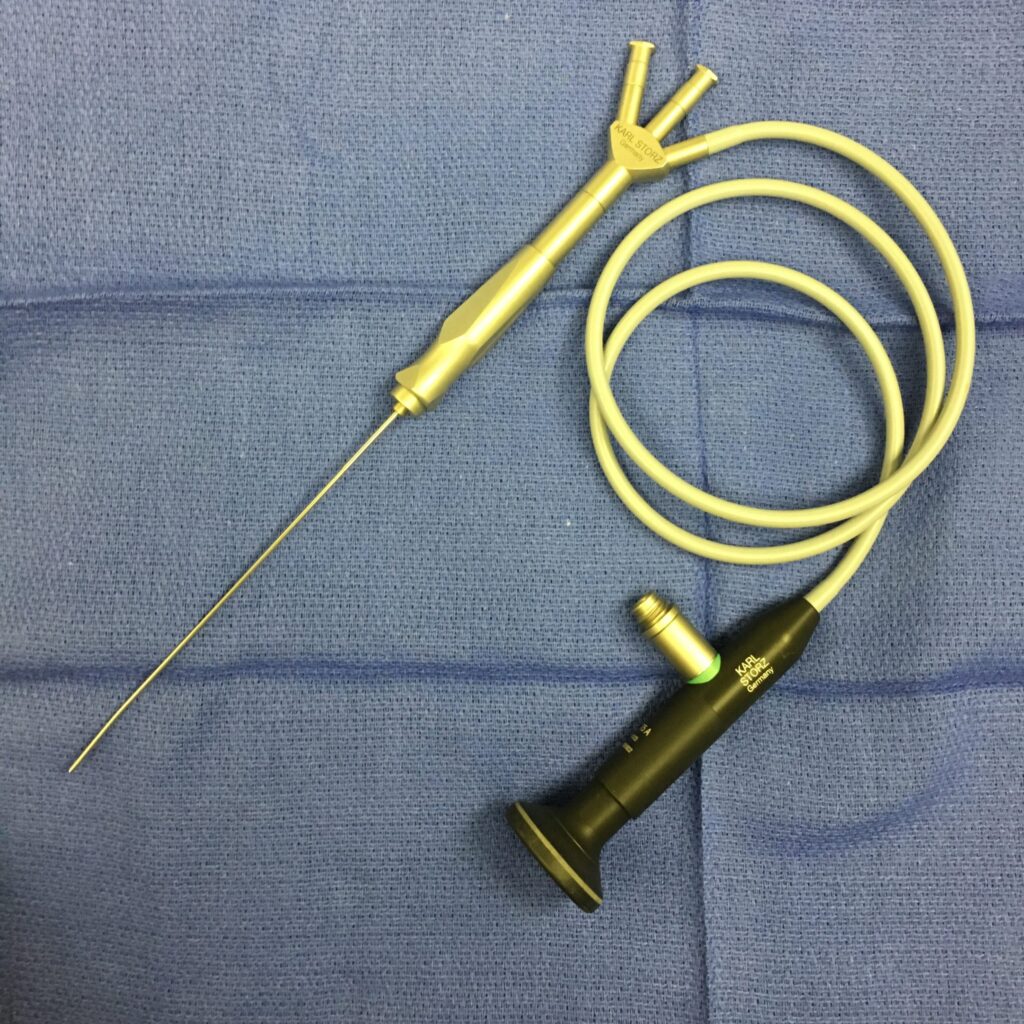Cerebrospinal fluid rhinorrhea is the medical term for spinal fluid dripping from your brain cavity though your sinuses and out of your nose. It is a very rare condition, usually seen only after head trauma or as a complication of sinus surgery. More rarely, it can be seen occurring spontaneously in the condition of benign intracranial hypertension.
I will frequently see patients with atypical sinus symptoms that warrant evaluation for a spinal leak – usually a patient with a runny nose that is one-sided, thin and watery, and associated with headaches. A history of surgery, trauma, or obesity also raise red flags. Cerebrospinal fluid (CSF) will also have a distinct salty taste if it runs down the throat.
The work up for a patient with these complaints usually starts with a high resolution CT scan of the skull base, the lining of bone between the sinuses and the brain. This bone is ordinarily extremely thin like an egg shell. Any small fracture or naturally occurring gap in the bone raises the suspicion for a leak.
Other tests that may be done include a cisternogram, where x-ray dye is injected into the spine and a scan is taken of the skull base again to look for a leak, or a Beta-2-transferrin test. The Beta-2 test looks for a certain protein that is only found in spinal fluid. The patient is asked to collect a sample of their nasal drainage and send it off for this test.
If a CSF leak through the sinus roof is suspected surgery is recommended for repair to prevent meningitis. Most leaks today are repaired endoscopically using similar tools and techniques as in sinus surgery. Usually a multilayer durable flap of either living tissue or a scaffolding for tissue ingrowth is carefully placed to plug the leak. Large skull base defects or difficult leaks can be repaired the conventional way with open brain surgery, which is much more risky. A spinal drain may be used for a few days after surgery to keep pressure off the repaired site. The patient has to be extremely careful about avoiding nose-blowing, physical exertion, or a CPAP machine for several weeks until the site is confirmed 100% healed.

